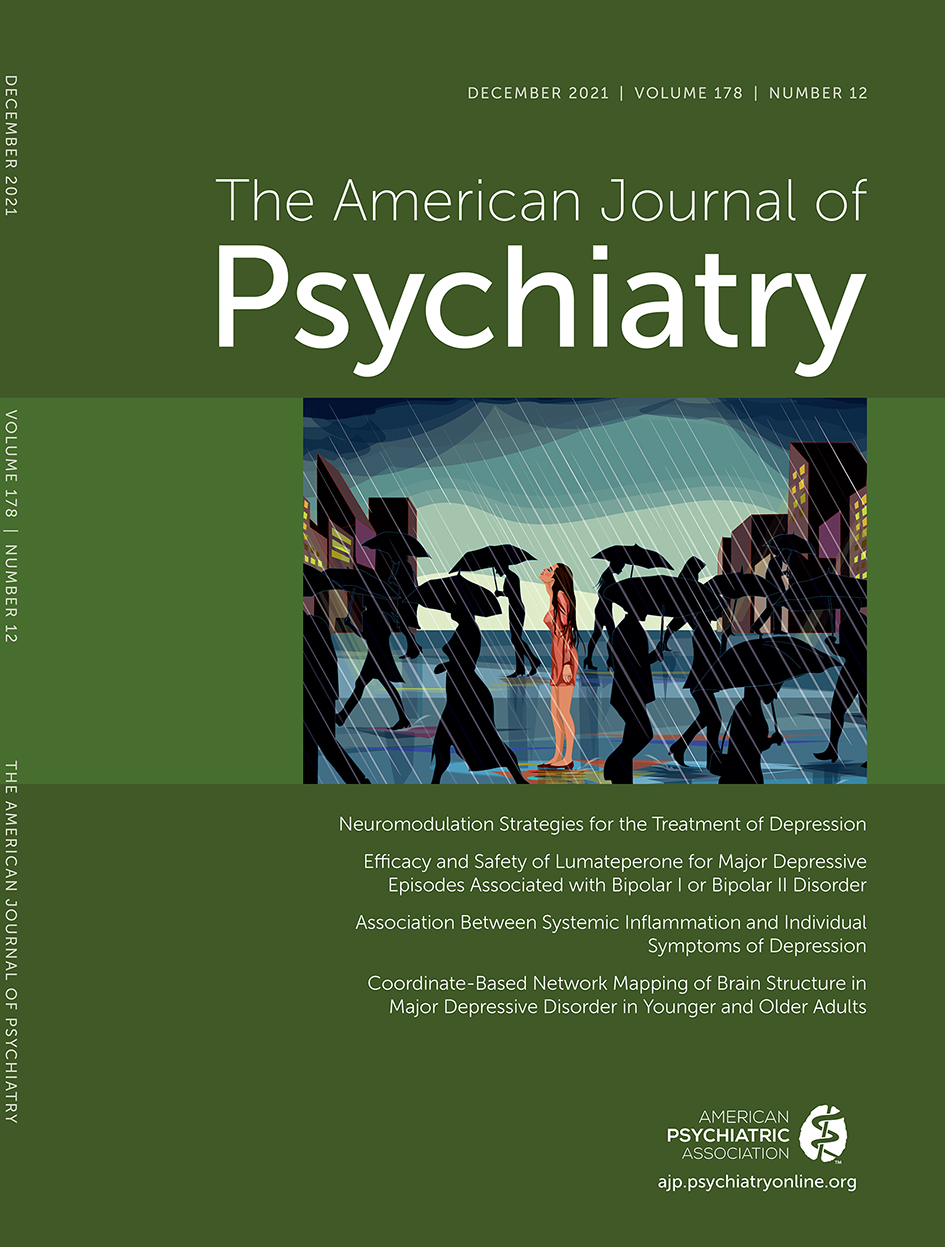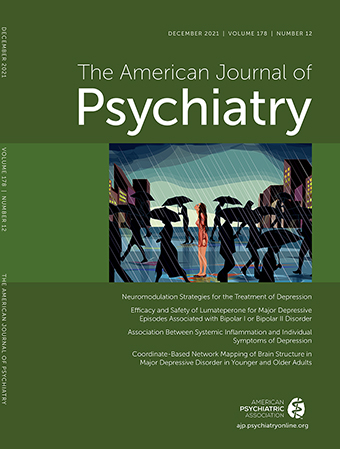TO THE EDITOR: We thank Drs. Reus, Mattes, and Schatzberg for their comments.
The contributors to our article “Synthesizing the Evidence for Ketamine and Esketamine in Treatment-Resistant Depression: An International Expert Opinion on the Available Evidence and Implementation” were identified and invited by the first and last author (
1). Invitation was sent to experts on the basis of their expertise in mood disorders, psychopharmacology, neurobiology of mood disorders, rapid-acting antidepressants, ketamine/esketamine and derivatives, or implementation experience.
We received no funding from any external source for this work. The first draft of the article was generated by the first author with substantive contributions from each of the coauthors. There was no pharmaceutical industry, professional writing agency, or external consultant involved. There was no communication between the editorial or advertising staff of the American Journal of Psychiatry or the American Psychiatric Association and any authors of the article.
Dr. Mattes states, “For patients who have not responded to two antidepressants, e.g., an SSRI and bupropion, there are many reasonable alternatives that are safer and much less complicated than ketamine, e.g., other classes of antidepressants, including SNRIs, mirtazapine, tricyclic antidepressants, and even MAO inhibitors, or augmentation with lithium, thyroid supplementation, or atypical antipsychotics.” We agree that there is a range of somatic treatment options for adults with treatment-resistant depression, and we describe in large measure the range of options noted by Dr. Mattes.
The best available evidence has amply documented the suboptimal efficacy of most of the augmentation strategies mentioned by Dr. Mattes in persons with treatment-resistant depression. For example, results from the Sequenced Treatment Alternatives to Relieve Depression (STAR*D) indicated that remission rates in persons failing two prior monoaminergic antidepressants, alone or in combination with lithium, thyroxine, and/or mirtazapine, were less than 15% (atypical antipsychotics were not studied in STAR*D). Moreover, the time to remission in persons receiving third- and fourth-step treatments was considerably lengthened (
2). The foregoing remission rates and therapeutic inertia are unacceptable to persons who live with mood disorders (
3).
In the “Future Research Vista” section of the article, we specifically identify the need for comparative head-to-head studies comparing the efficacy, safety, and tolerability of selected atypical antipsychotics, as well as neurostimulation modalities with ketamine/esketamine. Only olanzapine-fluoxetine combination (OFC) is currently approved by the U.S. Food and Drug Administration (FDA) for adults with treatment-resistant depression (
4). Aripiprazole, brexpiprazole, and quetiapine each have FDA approvals as add-on strategies in adults with major depressive disorder.
Intolerability, however, is a major limitation of atypical antipsychotics in adults with major depressive disorder (
5). For example, FDA-approved atypical antipsychotics for major depressive disorder are associated with clinically significant weight gain, metabolic dysregulation, acute extrapyramidal symptoms, and tardive dyskinesia (
6,
7). It is also notable that the evidence base for atypical antipsychotics in major depressive disorder is comprised largely of acute studies with a paucity of long-term data characterizing tolerability and safety. In contradistinction, maintenance data for esketamine has documented the long-term efficacy, safety, and tolerability of esketamine in adults with treatment-resistant depression up to 1 year (
8,
9). Although there have been no adequately powered large controlled trials directly comparing atypical antipsychotics to ketamine/esketamine in treatment-resistant depression, results from recent systematic reviews and network meta-analyses of the relative efficacy of atypical antipsychotics versus ketamine/esketamine document higher effect sizes for esketamine (
10,
11).
We share Dr. Mattes’s concern that there is a need for characterizing the long-term safety of ketamine/esketamine in adults with treatment-resistant depression. This concern is substantiated in our article, and we specifically cite results from the FDA Adverse Reporting System suggesting a possibility of toxicity in persons receiving esketamine for treatment-resistant depression (
12). The opioid crisis is indeed a cautionary reminder of the need for appropriate patient selection, personnel, and setting for implementation and characterization of long-term risks with ketamine/esketamine (
13).
Dr. Schatzberg makes reference to a recent paper by Bonaventura et al. indicating that “ketamine and esketamine bind to three receptors—kappa, mu, and NMDA—at similarly low micromolar strengths” and that the “canonical NMDA antagonist MK-801 has an affinity at the NMDA receptor that is 1,000-fold greater than that of ketamine” (
14). We agree that MK-801 does have greater affinity for NMDA receptors relative to ketamine. We made no reference to relative affinities of ketamine and MK-801. MK-801’s high affinity for NMDA does not exclude the possibility that ketamine also can exhibit significant affinity for NMDA receptors.
We also agree that the role of mu receptors in the mechanism of action of ketamine in treatment-resistant depression has not been excluded. We cite both the Krystal et al. and Williams et al. papers (
15,
16). We agree that the Krystal study had a small sample size without randomization, placebo control, or blinding. We also recognize that the Krystal study is difficult to compare with the Williams study insofar as patients enrolled in the Krystal study had major depressive disorder and alcohol use disorder, Krystal used injectable naltrexone rather than the oral naltrexone used in the Williams study, and outcomes were assessed at 4 hours in the Krystal study rather than at 1 day in the Williams study.
Dr. Schatzberg is correct in highlighting that the results are not statistically significant. Indeed, there is clearly the need to parse the role of opioidergic and other mechanisms in the therapeutic and safety profile of ketamine/esketamine in adults with treatment-resistant depression.
Most pharmacotherapy trials define treatment-resistant depression as failing two or more adequate antidepressant trials during the index episode (
17). The foregoing definition was utilized for several of the published randomized controlled trials of racemic ketamine as well as the pivotal esketamine trials in treatment-resistant depression. Similar criteria were utilized for the olanzapine-fluoxetine studies in treatment-resistant depression.

